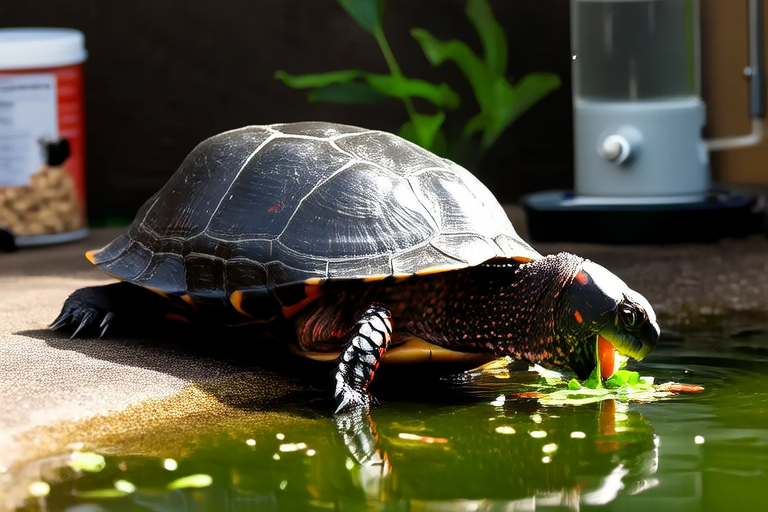Ultimate Guide to Feeding Your Red-eared Slider for Optimal Health
Red-eared sliders (Trachemys scripta elegans) are one of the most popular pet turtles due to their hardiness and adaptability. However, providing them with a well-balanced diet is crucial for their health and longevity. This guide will cover everything you need to know about feeding your red-eared slider, from understanding their nutritional requirements to proper feeding techniques and prevention of common health issues.
Nutritional Requirements
Red-eared sliders require a varied diet rich in proteins, vitamins, and minerals. Their diet should consist of approximately 25% protein, 40% vegetables, and 35% fruits or other plant matter. Protein is essential for growth, muscle repair, and overall vitality, while vegetables and fruits provide essential vitamins, minerals, and fiber.
Commercial Pellets
Commercial turtle pellets are convenient and can form the foundation of your red-eared slider’s diet. Look for high-quality products that offer complete nutrition, including calcium, vitamin D3, and other necessary nutrients. Always check the expiration date and store pellets in a cool, dry place to maintain their nutritional value.
Vegetables and Fruits
A variety of leafy greens, such as romaine lettuce, kale, and collard greens, should be offered regularly. Other suitable vegetables include bell peppers, carrots, and squash. Fruits like strawberries, blueberries, and apples can be given occasionally but should not exceed 10% of the total diet. Be cautious with fruits as they can cause digestive issues if overfed.
Protein Sources
Protein should come from lean sources such as earthworms, crickets, and commercially available turtle sticks. Younger turtles may require more protein than adults, but it should still be limited to prevent obesity. Overfeeding protein can lead to shell deformities and kidney problems.
Feeding Amounts
The amount of food you feed your red-eared slider should be based on its size and age. A general rule is to feed the turtle an amount equivalent to the size of its head once daily for juveniles and every other day for adults. Always monitor your turtle’s weight and adjust portions accordingly.
Maintaining Water Quality
Water quality is crucial for the health of your red-eared slider. Regularly clean the tank and change the water to prevent bacterial growth and ensure optimal health. Overfeeding can lead to poor water quality, so it’s important to remove uneaten food promptly.
Preventing Overfeeding
Overfeeding can lead to obesity and other health issues. Monitor your turtle’s eating habits and adjust portion sizes as needed. Avoid feeding your turtle too frequently, especially when they are young, to encourage natural foraging behaviors.
Common Nutritional Deficiencies and Symptoms
Nutritional deficiencies can lead to serious health issues. For example, a lack of calcium can result in metabolic bone disease (MBD), characterized by soft shells and weakened bones. Vitamin A deficiency can cause eye infections and respiratory issues. Regular veterinary check-ups and a balanced diet can help prevent these problems.
Transitioning Young Turtles to Adult Diets
Young red-eared sliders have higher protein requirements for growth. As they mature, gradually decrease the proportion of protein in their diet. Transitioning should be done slowly to avoid shocking the turtle’s digestive system. Consult with a veterinarian to create a feeding plan tailored to your turtle’s specific needs.
Meal Preparation and Storage
Prepare meals in small batches and store them in airtight containers in the refrigerator. Freeze any excess food for up to three months. Thaw frozen food at room temperature before serving. Always wash hands and utensils thoroughly after handling raw foods to prevent contamination.
Importance of a Balanced Diet
A balanced diet is vital for the overall health and longevity of red-eared sliders. Proper nutrition supports strong immune systems, healthy growth, and vibrant coloration. By following this guide, you can ensure that your turtle enjoys a long and happy life.
For more information on red-eared slider care, consult reputable sources and seek advice from experienced turtle owners and veterinarians. Remember, each turtle is unique, so tailor their diet according to their individual needs and preferences.
